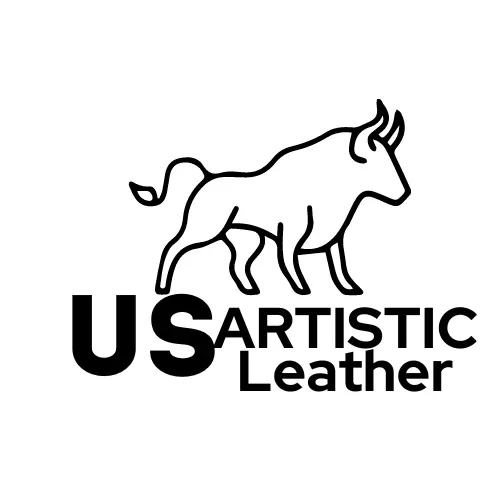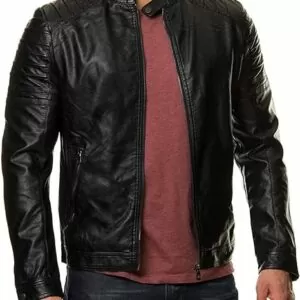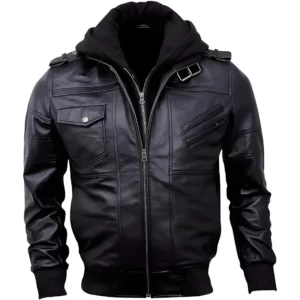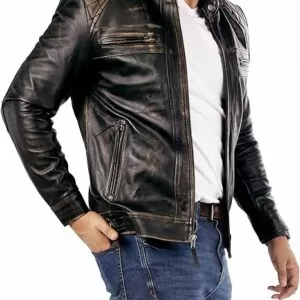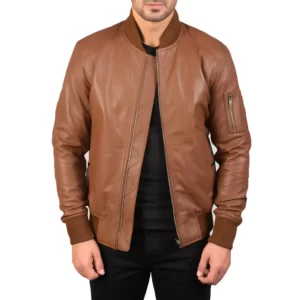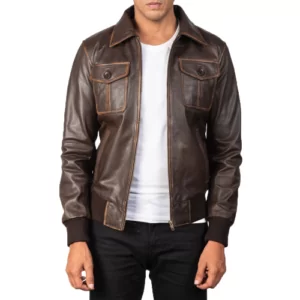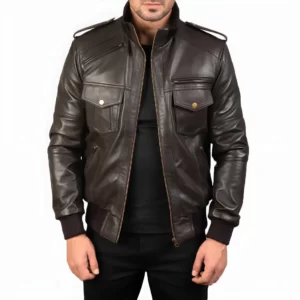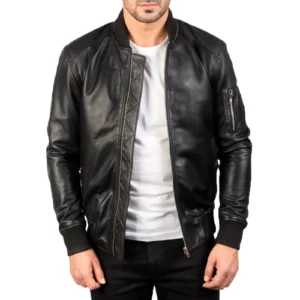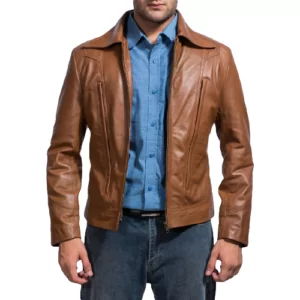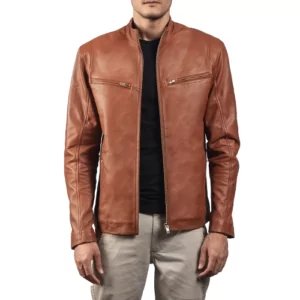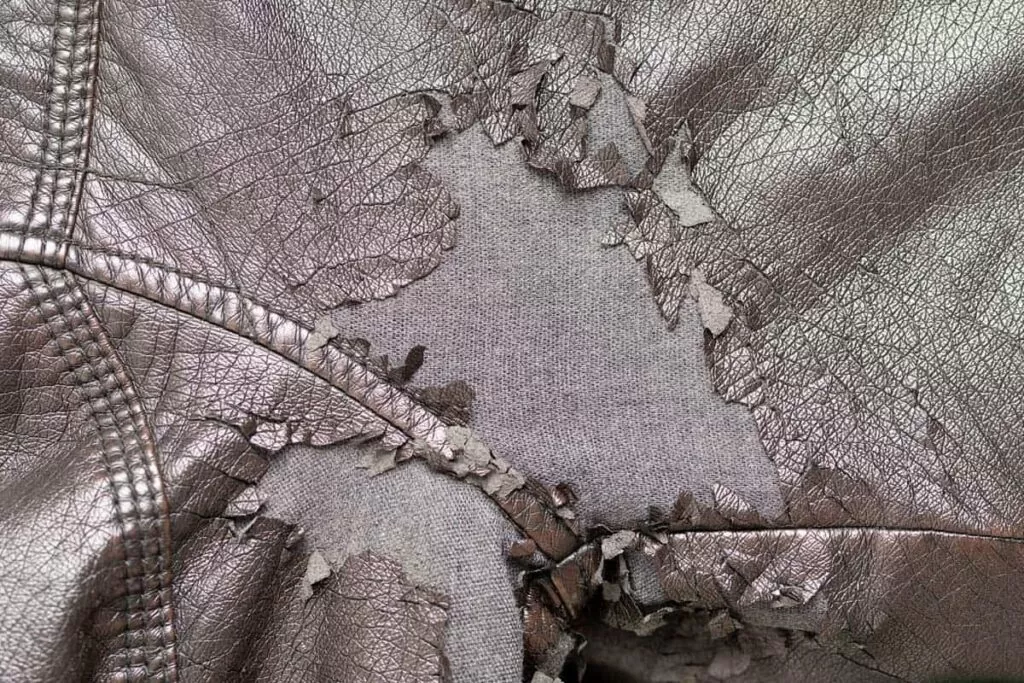
Leather jackets are revered for their timeless style, durability, and rugged charm. However, a common issue faced by many leather jacket owners is the gradual deterioration characterized by peeling or flaking of the material. This phenomenon can be disheartening, especially considering the investment often associated with acquiring a quality leather garment.
But why is leather jacket peeling? Let’s delve into the various factors contributing to the peeling of leather jackets, drawing from both scientific research and real-life experiences.
1. Quality of Leather
The quality of the leather used in manufacturing plays a pivotal role in determining the longevity of a leather jacket. Genuine leather comprises several layers, with the outermost layer known as the grain. High-quality leather jackets are typically made from full-grain or top-grain leather, which undergo minimal processing, retaining the natural grain and strength of the hide. Conversely, jackets made from bonded or corrected-grain leather, which involve more extensive processing and synthetic additives, are more prone to peeling and flaking over time.
2. Environmental Factors
Exposure to harsh environmental conditions can accelerate the deterioration of leather jackets. Prolonged exposure to sunlight, high humidity, or extreme temperatures can cause the leather to dry out, lose its natural oils, and become brittle, leading to peeling. Additionally, exposure to rain or moisture without proper drying and conditioning can promote the growth of mold and mildew, further compromising the integrity of the leather.
Interesting Article: Can I Wear Leather Jacket with Formal Wear? In Which Occasions I Can Use Leather Jacket
3. Lack of Proper Care and Maintenance
Regular care and maintenance are essential for preserving the quality and appearance of leather jackets. Failure to clean, condition, and protect the leather regularly can result in the accumulation of dirt, oils, and other contaminants, which can degrade the material over time. Furthermore, using harsh cleaning agents or neglecting to use specialized leather conditioners can strip away the natural oils and moisture, leaving the leather susceptible to cracking and peeling.
4. Wear and Tear
The way a leather jacket is worn and handled can also impact its longevity. Rough handling, frequent friction, or excessive stretching can cause the leather fibers to weaken and eventually peel. Additionally, improper storage techniques, such as folding or hanging in direct sunlight, can lead to creasing and distortion of the leather, exacerbating the peeling process.
Real Experiences
Many individuals have shared their experiences with leather jacket peeling, highlighting the frustration and disappointment associated with this issue. One customer lamented the peeling of their beloved leather jacket after only a few months of wear, attributing it to poor quality leather and inadequate care. Another recounted their struggle to salvage a vintage leather jacket passed down through generations, emphasizing the importance of proper maintenance and preservation techniques.
Here are High-Quality Leather Jackets
-
Product on sale
 Biker Men’s Real Leather Black Bomber JacketOriginal price was: $189.99.$149.99Current price is: $149.99.
Biker Men’s Real Leather Black Bomber JacketOriginal price was: $189.99.$149.99Current price is: $149.99. -
Product on sale
 Bomber Genuine Leather Men’s Jacket Hooded – Black and BrownOriginal price was: $199.99.$149.99Current price is: $149.99.
Bomber Genuine Leather Men’s Jacket Hooded – Black and BrownOriginal price was: $199.99.$149.99Current price is: $149.99. -
Product on sale
 Lambskin Leather Jacket – Men’s Casual Style Café Racer Real Quilted Style for MotorcycleOriginal price was: $220.00.$179.99Current price is: $179.99.
Lambskin Leather Jacket – Men’s Casual Style Café Racer Real Quilted Style for MotorcycleOriginal price was: $220.00.$179.99Current price is: $179.99. -
Product on sale
 Men’s Bomber Leather Jackets in Brown, Blue and BlackOriginal price was: $249.99.$189.99Current price is: $189.99.
Men’s Bomber Leather Jackets in Brown, Blue and BlackOriginal price was: $249.99.$189.99Current price is: $189.99. -
Product on sale
 Mens’ Aaron Brown Leather Bomber JacketOriginal price was: $199.99.$159.99Current price is: $159.99.
Mens’ Aaron Brown Leather Bomber JacketOriginal price was: $199.99.$159.99Current price is: $159.99. -
Product on sale
 Agent Shadow Mens Brown Leather Bomber JacketOriginal price was: $199.99.$169.99Current price is: $169.99.
Agent Shadow Mens Brown Leather Bomber JacketOriginal price was: $199.99.$169.99Current price is: $169.99. -
Product on sale
 Bomber Genuine Leather Men’s JacketOriginal price was: $220.00.$159.99Current price is: $159.99.
Bomber Genuine Leather Men’s JacketOriginal price was: $220.00.$159.99Current price is: $159.99. -
Product on sale
 Old School Brown Bomber Leather jacketOriginal price was: $230.00.$179.99Current price is: $179.99.
Old School Brown Bomber Leather jacketOriginal price was: $230.00.$179.99Current price is: $179.99. -
Product on sale
 Brown Leather Biker Bomber JacketOriginal price was: $199.99.$159.99Current price is: $159.99.
Brown Leather Biker Bomber JacketOriginal price was: $199.99.$159.99Current price is: $159.99.
Preventive Measures
While preventing leather jacket peeling entirely may be challenging, there are several preventive measures that can help mitigate the risk and prolong the lifespan of the garment. Regularly cleaning and conditioning the leather with high-quality products specifically formulated for leather care can replenish lost moisture and oils, keeping the leather supple and resilient. Additionally, storing the jacket in a cool, dry place away from direct sunlight and moisture, and avoiding excessive wear and tear can help preserve its integrity.
The peeling of leather jackets can be attributed to a combination of factors, including the quality of the leather, environmental conditions, lack of proper care and maintenance, and wear and tear. By understanding these factors and adopting preventive measures, leather jacket owners can prolong the life of their cherished garments and continue to enjoy their timeless appeal for years to come.
How to Repair Peeling Leather Jacket?
Repairing a peeling leather jacket can be done at home, but the approach depends on the severity of the damage and your desired outcome. Here are some options, each with its own pros and cons:
Simple Fixes:
- Leather glue or adhesive: This is a good option for small peels or cracks. Apply a leather-specific adhesive to the separated edges, press them firmly together, and let it dry. Be careful not to use too much glue, as it can leave visible marks.
- Shoe polish or permanent marker: For minor cosmetic touch-ups, matching shoe polish or a permanent marker can disguise small areas of peeling. However, this won’t fix the underlying issue and may wear off easily.
More Involved Repairs:
- Leather filler: This is a paste-like substance that fills in cracks and gaps caused by peeling. Apply it after cleaning and drying the area, smooth it out, and let it dry completely. Sanding lightly afterwards can create a seamless finish.
- Leather dye: If the peeling has affected the color of the leather, you can use leather dye to restore its uniformity. Choose a dye that closely matches the original color and apply it carefully following the instructions.
Things to Consider:
- Type of leather: Different leathers require different repair methods. If you’re unsure about the type of leather your jacket is made of, consult a professional.
- Extent of damage: For large areas of peeling or significant structural damage, professional repair is recommended. A cobbler or leather specialist can assess the damage and suggest the best course of action.
- Desired outcome: If you want a perfect, invisible repair, professional help is likely necessary. However, if you’re comfortable with a more rustic look and willing to put in some effort, DIY repairs can be a viable option.
Here are some additional resources that you might find helpful:
- Step-by-step guide with pictures: https://www.angeljackets.com/guides/how-to-fix-leather-jacket-peeling/
- Expert tips and different repair methods: https://www.fjackets.com/
- Video tutorial: https://m.youtube.com/watch?v=1njsVKa04y8
Remember, it’s always best to test any repair method on an inconspicuous area of the jacket first to ensure compatibility and desired results. Good luck!
